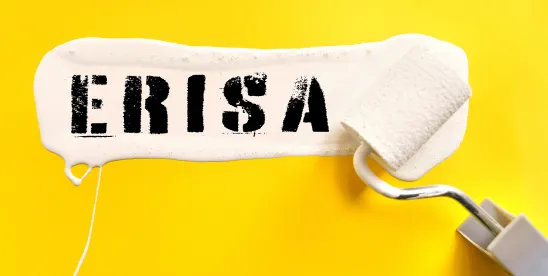On Thursday, April 17, a unanimous Supreme Court held that a less demanding pleading standard is applicable when plaintiffs bring an Employee Retirement Income Security Act of 1974 (ERISA) class action under ERISA Section 406, despite concerns that this might lead to a flood of meritless claims. This recent decision affects nearly all employers. The underlying question in Cunningham v. Cornell University, et al.—whether pleading a prohibited transaction claim under ERISA Section 406 involving a plan and a party in interest also required pleading elements of ERISA Section 408, which lays out exemptions to that prohibition—has been answered unanimously by the Supreme Court on Thursday, April 17. Succinctly, the Court held that “[t]o state a claim under §1106(a)(1)(C), a plaintiff need only plausibly allege the elements contained in that provision itself, without addressing potential §1108 exemptions.”
1. Procedural History of Cunningham v. Cornell University, et al.
The lawsuit, Cunningham v. Cornell University, U.S., No. 23-1007, alleged various breaches of fiduciary duty and prohibited transactions under ERISA. Specifically, the plaintiff class alleged that payments made to the plan’s service providers constituted prohibited transactions because the fees charged for investment management and recordkeeping were too high. The plaintiff-appellant class participates in “403(b)” retirement plans administered by Cornell University (Cornell). A 403(b) retirement plan is analogous to a 401(k) plan, but a 403(b) plan is sponsored by certain tax-exempt organizations, including nonprofits and not-for-profits.
The district court granted Cornell’s motion to dismiss the prohibited transaction claims, and the Second Circuit Court of Appeals affirmed the dismissal. The Second Circuit, on appeal, held that “to state a claim for a prohibited transaction pursuant 29 U.S.C. § 1106(a)(1)(C), it is not enough to allege that a fiduciary caused the plan to compensate a service provider for its services; rather, the complaint must plausibly allege that the services were unnecessary or involved unreasonable compensation, see id. § 1108(b)(2)(A), thus supporting an inference of disloyalty.”
2. The Supreme Court Unanimously Weighs In
The Supreme Court disagreed. The Court held that the reference in ERISA Section 406 to the exemptions in ERISA Section 408 does not reflect a heightened pleading standard for violations under ERISA Section 406. Instead, Justice Sotomayor, penning the Opinion for the judges, explained that the exemptions in ERISA Section 408 are presented in the “orthodox format of an affirmative defense” and requiring plaintiffs to plead and disprove all potentially relevant exemptions would be “impractical.”
The unanimity of the Opinion is significant. Justices Brett Kavanaugh and Samuel Alito expressed their concern during oral argument regarding the ramifications of the plaintiff-appellants’ position. Even going as far as suggesting it “seems nuts” to plead a prohibited transaction simply due to the existence of a recordkeeping arrangement. Justice Kavanaugh said that accepting the petitioners’ position would be an “automatic ticket to pass go” and get to discovery, summary judgment; the litigation would substantially increase. Even Justice Sotomayor, who penned the majority opinion, noted she had “serious concerns” that the Court’s ruling could lead to an “avalanche” of meritless litigation, going so far as to outline methods for district courts to manage a potential influx of cases.
Specifically, the Opinion suggested utilizing Rule 11 sanctions on meritless complaints and potentially cost shifting (awarding defense attorneys' fees and costs if they prevail on a motion to dismiss). The Opinion even suggested that district courts should more frequently employ the “not commonly used” Federal Rule of Civil Procedure 7(a)(7) to handle allegations that service provider transactions are prohibited by ERISA. Under Rule 7(a)(7), district judges can require plaintiffs to argue that the affirmative defenses in ERISA Section 408 are inapplicable—namely, that the prohibited transaction exemption does not apply—in a brief replying to a defendant's answer to the claim.
3. Potential Implications of this Decision
Even prior to this ruling, ERISA class actions were already growing. In 2024, over 136 class action lawsuits alleging ERISA violations were filed. While ERISA class actions have not reached the 2020 high of 200 ERISA class action lawsuits, there has undoubtedly been an upward trend in bringing these suits. And, with the newly clarified liberal pleading standard, both for-profit and nonprofit employers may see an uptick in lawsuits alleging violations of ERISA Section 406. While ERISA Section 408 is not considered part of the pleading requirements for a ERISA Section 406 violation, employers can still rely on ERISA Section 408 exemptions as affirmative defenses.






 />i
/>i
